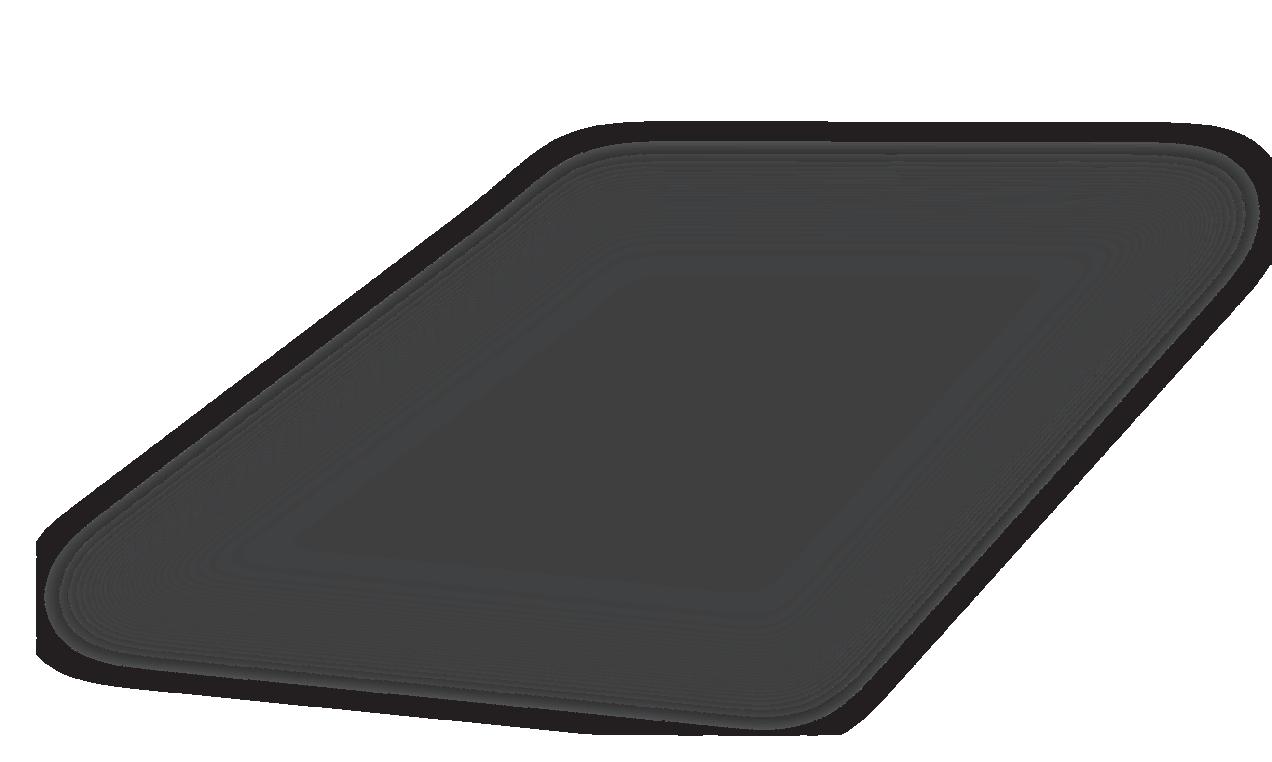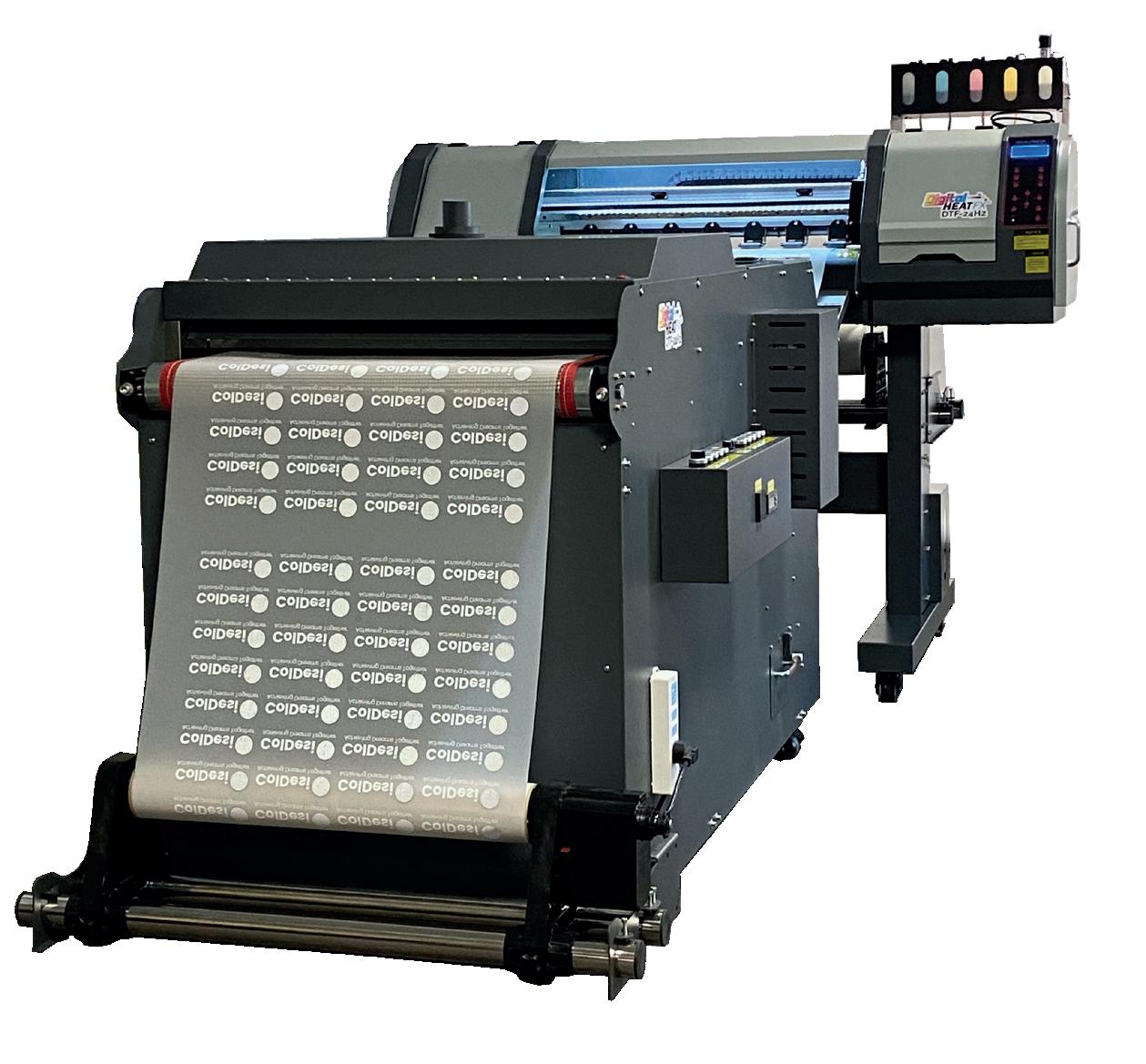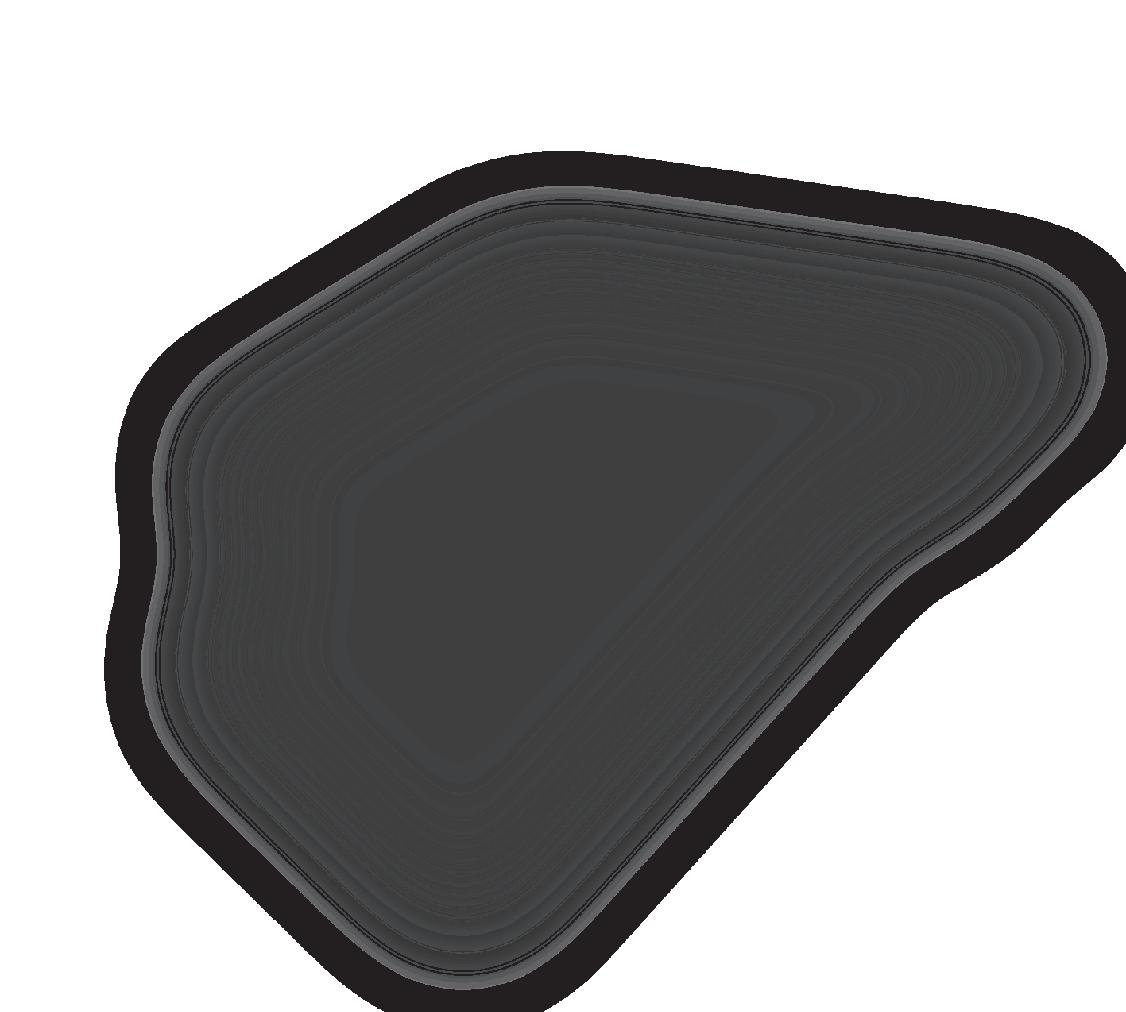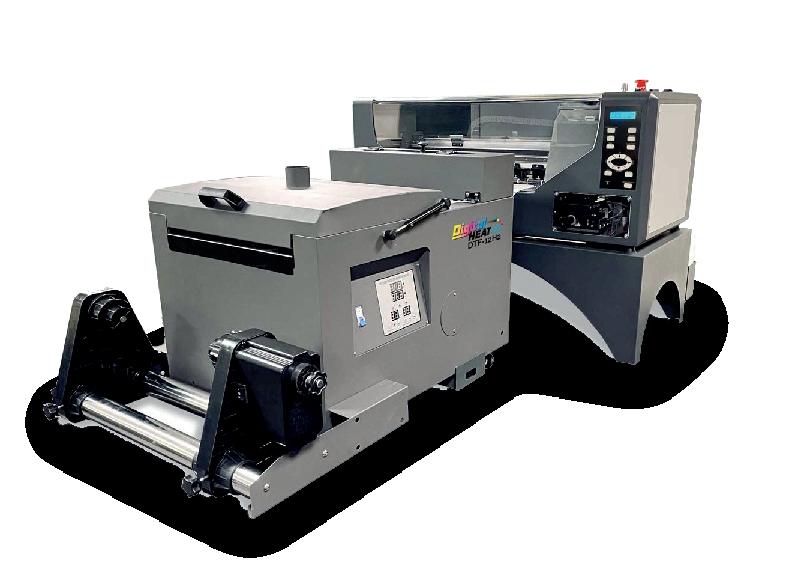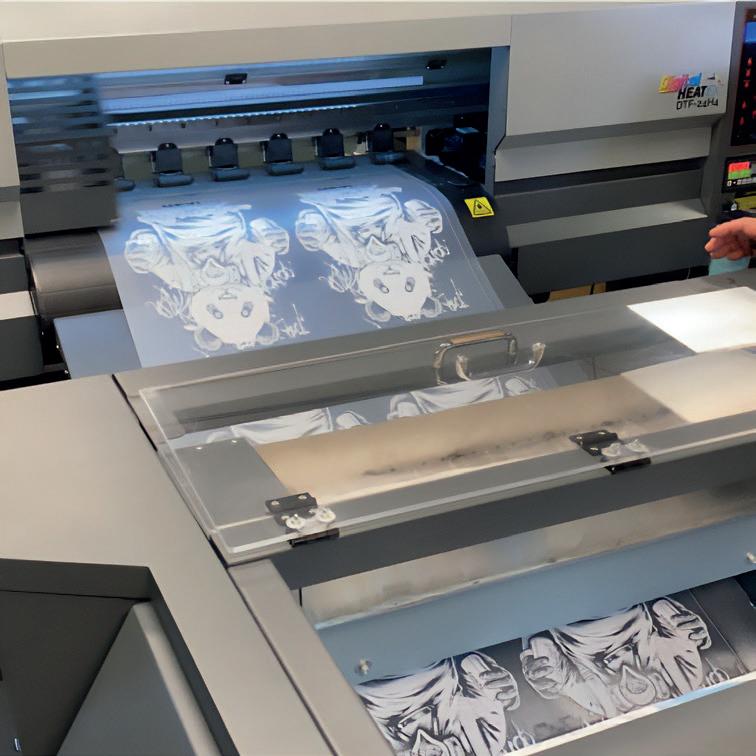
3 minute read
SAY YES TO DIRECT TO FILM TRANSFER PRINTING
Direct-to-film or DTF printing is taking the customisation industry by storm. As the name implies, this process involves speciality machines that print directly on a film, making this a more permanent and colourful transfer printing method.
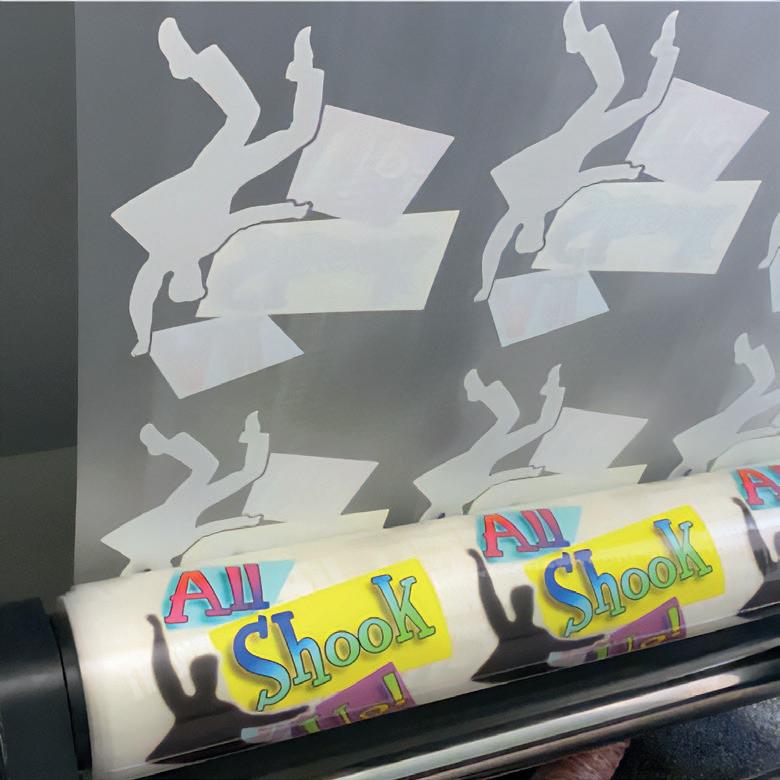
Personalising garments and promotional gifts has never been so easy. Of course, many loyal customers will always want more. They can’t gift the same mouse mat and mug each year.
Workwear apparel can increase your product range from just t-shirts and polos to hospitality and care workers’ protective, smart clothing.
Branding is lucrative, but look after your fine reputation in print by choosing the best DTF printer and consumables.
Direct-to-film printing involves a choice of two major different technologies. DTF for fabrics and textile applications, as well as UV DTF printing that is for decals and application on hard surfaced goods.
Direct-to-film printing uses a combination of cyan, yellow, magenta, white and black pigment inks. The coloured pigment is printed face down on a translucent film, and then the white ink forms a layer on top, giving these transfers a vibrant, rich look when placed on garments.
Key Components Of Dtf Printing Process
There are a few absolute must-haves if you are looking to start DTF printing. Number one the printer.
As mentioned, there are two major types of DTF printers, those for fabrics and those for decals. The way the technology of the printing process works is relatively the same in all these printers. The big difference is the ink used.
The second thing you must have for direct film printing is the film to make the transfer. The film is basically a transfer sheet. Some films come in large rolls for high production, but you can also find the transfer film in pre-cut sheets. The printer you are using will determine what film you need for the job.
Advantages Of Dtf Printing
Direct-to-film printing stands out for its exceptional versatility across various substrates and its ability to deliver remarkable colour accuracy and vibrancy.
One of DTF printing’s strengths is its compatibility with a wide range of materials, including textiles, garments, ceramics, wood, leather, and more.
New horizons are being developed as the industry masters intricate designs on fabrics or detailed images on hard surfaces, always delivering consistency and reproducing vivid and true-to-life colours. On Brand every time.
Get The Feel Of Printing On Fabric
The previously thought undoable is now achievable.
The latest garment decorating machine require no pre-treat, have a super soft hand feel, and feature amazing wash fastness.
The Digital HeatFX line of DTF printers are commercial grade, automatic transfer printers. The Digital HeatFX DTF 24/H4 features four print heads and a printing field width of 24 inches (60cm).
The Digital HeatFX 24/H4 prints 145 linear feet per hour (41 linear metres per hour). This translates to around 300 full front transfers an hour.
DTF printers use translucent PET films. They have a thickness of approximately 0.75mm. This is great for production, because they only need to be heat-pressed onto garments for about 8-10 seconds.
There are two classifications of PET Films based on temperature. These are cold peeltype films and hot peel-type films.
Adhesive Powder
The hot melt adhesive powder is what gives DTF prints their transferring power. This powder is a white granular product and works as an adhesive material. This helps bind the coloured pigments in the printer to the surfaces you are printing on.
With commercial-grade DTF printers like the DigitalHeat FX line, the application of the hot melt powder is automatic. Meaning the machine has a powder storage container that carefully monitors and pours the amount of powder needed on the transfers. No shake and vac here.
The DigitalHeat FX DTF printers are a production powerhouse, so of course they also have an on-board dryer that melts or “cures” the powder into a thin adhesive coating onto the printed ink.
For those using a converted DTG printer to produce DTF transfers, they will need to purchase an additional curing machine or use a heat press with a hover feature.
HEAT-PRESSING THE FILM ONTO THE FABRIC
Now we’ve come to the last stage of the DTF printing process for making custom t-shirts. These types of transfers require heat to adhere to garments and other fabrics. A new job for your existing heat press or upgrade to keep up with the speed of the transfers.
DTF printing uses two things: water-based inks and the hot melt powder. They are extremely soft and flexible, making them ideal for clothing.
New print products for your customers, think collars, tags, pant legs, etc.
Adding a home décor range like pillowcases, table runners, blankets and tea towels is an easy way to diversify your print and t-shirt business with DTF printed transfers.
www.yesltd.co.uk
01623 863343 • sales@yesltd.co.uk

